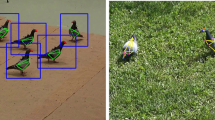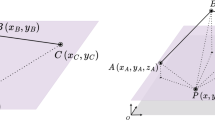Abstract.
Assessing the quality of a geographical data set requires comparison with a reference data set where the positions, shapes and functions of the geographical entities involved are described more realistically, i.e., more accurately and more precisely. While positional accuracy and semantic exactitude have been much studied by GI scientists, and also (though to a lesser degree) shape quality of linear entities, very few works have been directed towards the assessment of the quality of areal entities. This paper focus on assessing shape quality of areal entities.
Areal entities are usually represented in GIS by circular lists of coordinates that build polygons. This hinders the assessment of shape quality. Such a representation does not allow to easily grasp how an areal entity is structured. Areal entities are various: they may be simple polygons, complex polygons or regions (aggregates of simple or complex polygons with or without holes). Using coordinates to represent an area as a polygon does not make it easy to compare two objects that have globally the same shape with highly disturbed contours. Relevant representations for complex geographical entities are then required in order to handle the whole of their geometrical structure.
This paper focuses on such a representation, which has been investigated at the COGIT laboratory of IGN (The French National Mapping Agency). This method allows the description of shapes for geographical entities by means of mathematical moments. This technique has been extensively implemented in the pattern recognition domain and in robotics for shape matching, optical character recognition (OCR), remote sensing and signature verification, among others.
In our GI quality domain, the moments will be used to assess the shape quality of areal entities. This requires that groups of matched objects be first built between the reference data set and the data set to be assessed, which may be achieved by using existing matching tools.
In the first part of this paper the transformation of areal entities into moments is presented. Geometrical moments, complex moments and orthogonal moments (namely, Legendre moment and Zernike moments) are all addressed.
In the second part, similarity indexes and metrics in these spaces of representation are defined. Finally, we show the performance of these techniques through tests carried out on real geographical data sets and we present an example of how this new representation may be used to qualify shape between matched entities.
Similar content being viewed by others
Author information
Authors and Affiliations
Additional information
Received: 11 May 2001 / Accepted: 22 August 2001
Rights and permissions
About this article
Cite this article
Ali, A. Moment representation of polygons for the assessment of their shape quality. J Geograph Syst 4, 209–232 (2002). https://doi.org/10.1007/s101090100067
Issue Date:
DOI: https://doi.org/10.1007/s101090100067




